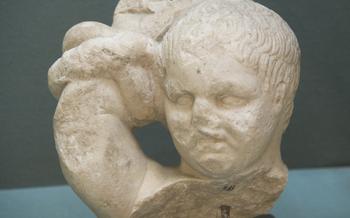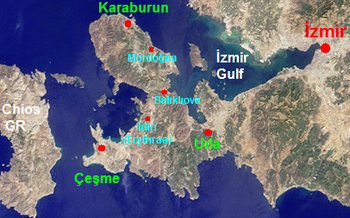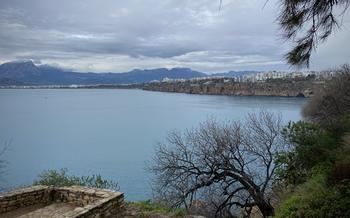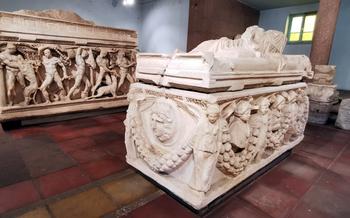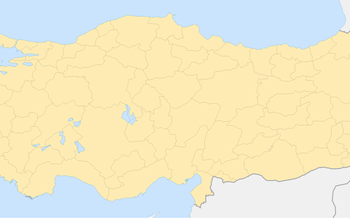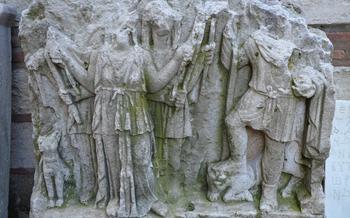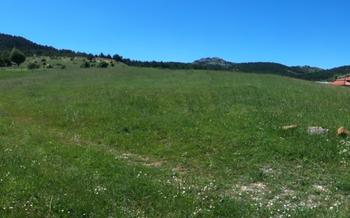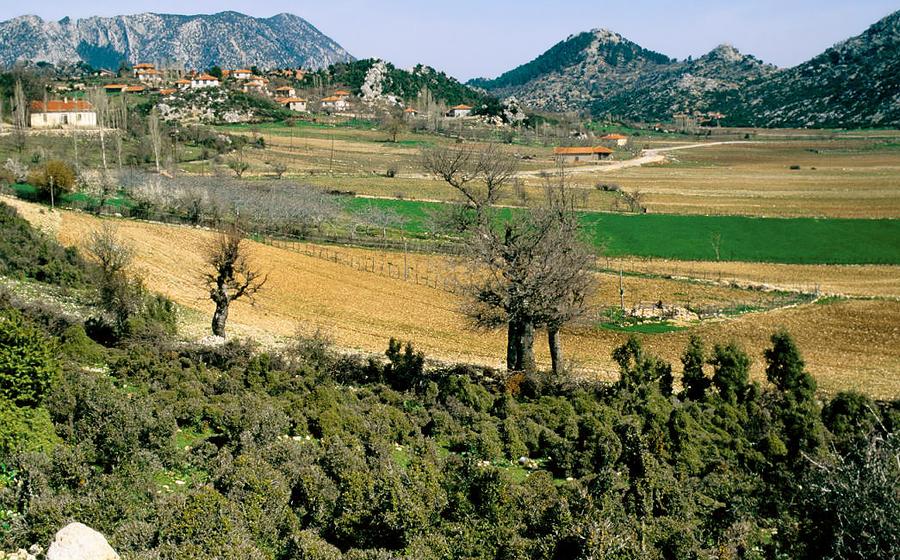
Men Fish Fountain
- Men Fish Fountain: Antiquity and Intrigue
- Historical Significance
- The Enigmatic Name
- Architectural Style and Design
- Archaeological Importance
- Location and Accessibility
- Historical Significance and Symbolism
- Architectural Design and Features
- Water Flow and Function
- Surrounding Area and Attractions
- Best Time to Visit
- Photography Tips and Instagrammability
- Family-Friendly Activities
- Accessibility for Visitors with Disabilities
- Conservation and Restoration Efforts
- Local Tour Guides and Guided Tours
- Archaeological Excavations and Findings
- Insider Tip: Hidden Gems
Men Fish Fountain: Antiquity and Intrigue
In the heart of Isparta, Turkey, a fountain of unique allure stands as a testament to ancient ingenuity and artistic vision. Known as the Men Fish Fountain, this enigmatic structure captivates visitors with its peculiar name, intricate design, and profound historical significance.
Historical Significance
The Men Fish Fountain, also known as the Fountain of the Mermen, dates back to the Roman period, estimated to be constructed in the 2nd century AD. This magnificent fountain once adorned the bustling streets of ancient Isparta, a city renowned for its thermal springs and rich cultural heritage.
The Enigmatic Name
The peculiar name, Men Fish Fountain, stems from the captivating stone figures that adorn its sides. These figures depict mermen, mythical beings with the upper body of a man and the tail of a fish. The exact reason behind this unique design remains shrouded in mystery, adding to the fountain's allure.
Architectural Style and Design
The Men Fish Fountain showcases a blend of architectural styles, harmoniously fusing Roman and Byzantine influences. Its elegant arched niches and intricate carvings exude an air of sophistication and craftsmanship. The fountain's design is believed to have been inspired by ancient Greek and Roman mythology, where deities associated with water were often depicted as mermen.
Archaeological Importance
The Men Fish Fountain holds significant archaeological importance, providing valuable insights into the cultural and artistic landscape of ancient Isparta. It is considered one of the best-preserved fountains from the Roman period, offering a glimpse into the city's opulent past and the craftsmanship of its artisans.
Location and Accessibility
The Men Fish Fountain can be found in the picturesque city of Isparta, Turkey, a region steeped in history and natural beauty. To immerse yourself in this historical marvel, head towards the city center, where you'll find the fountain proudly standing in Cumhuriyet Square. Its exact address is Cumhuriyet Meydanı, Merkez Mahallesi, Isparta Merkez/Isparta, making it easily accessible to visitors.
For those relying on public transportation, the journey to the fountain is a breeze. Numerous bus stops are conveniently located within a short walking distance, ensuring a seamless connection to the city's transportation network. Alternatively, if you prefer the flexibility of a private vehicle, ample parking spaces are available in the vicinity, allowing you to park without hassle and embark on your exploration.
Navigating the area around the fountain is a delightful experience. The streets are lined with quaint shops and boutiques, inviting you to browse for unique souvenirs and local treasures. Take your time to wander through the charming alleys and discover hidden gems that add to the allure of this historic city.
Historical Significance and Symbolism
The Men Fish Fountain is not merely a decorative piece but holds profound historical significance for the city of Isparta. Its origins lie in the ancient era, during the reign of the Roman Empire, when it served as a vital water source for the inhabitants of the city. The fountain's construction reflects the advanced engineering and architectural prowess of the Romans, showcasing their mastery of hydraulic systems and their ability to harness natural resources.
Over time, the fountain has become an integral part of Isparta's rich cultural and religious heritage. The fish motifs adorning the fountain carry deep symbolic meaning, representing fertility, abundance, and the life-giving properties of water. In local folklore, the fountain is associated with tales of miraculous healings and divine interventions, further solidifying its place in the hearts and minds of the Ispartan community.
Beyond its practical and symbolic significance, the Men Fish Fountain stands as a testament to the city's enduring history. It has witnessed the rise and fall of empires, the passing of centuries, and the transformation of Isparta into the vibrant and cosmopolitan city it is today. As such, the fountain serves as a reminder of the city's deep roots and the resilience of its people.
Architectural Design and Features
The Men Fish Fountain stands out for its unique design and the intriguing fish statues that adorn its structure. These fish statues, intricately carved from stone, are a defining feature of the fountain and hold significant symbolic meaning. The fountain's layout is symmetrical, with the fish statues arranged in a circular pattern around a central basin. The water flows from the mouths of the fish, creating a gentle cascade that adds to the tranquility of the surroundings.
The materials used in the construction of the fountain are primarily stone and marble, which have withstood the test of time and preserved the fountain's original form. The architectural style of the fountain is a blend of classical and Byzantine elements, reflecting the diverse cultural influences that have shaped Isparta's history. The fountain's structure is well-preserved, showcasing the skill and craftsmanship of its ancient builders.
Water Flow and Function
The Men Fish Fountain's water system is an ingenious feat of ancient engineering. Water from a nearby spring is channeled through a series of underground pipes and emerges from the mouths of the fish statues, creating a mesmerizing display of cascading water. The flow of water was once much stronger, but over time, natural wear and tear, as well as changes in the water source, have reduced its volume.
The flowing water held significant symbolism in ancient Isparta. It represented life, fertility, and abundance, and was believed to possess healing properties. Locals would often drink from the fountain's water, seeking blessings and cures for various ailments. Even today, the fountain's water is considered sacred, and many visitors still partake in the tradition of drinking from it.
The fountain's water source has fluctuated over the centuries. In times of drought, the flow would dwindle or even cease altogether. Conversely, during heavy rainfall, the fountain would overflow, creating a small pool around it. Today, the water flow is regulated and maintained to ensure a steady and consistent supply.
Surrounding Area and Attractions
The Men Fish Fountain is nestled within a vibrant and historic neighborhood teeming with cultural and historical landmarks. Just a stone's throw away, you'll find the awe-inspiring Isparta Museum, housing a treasure trove of artifacts and relics that chronicle the city's rich past. Immerse yourself in the captivating displays, transporting you back in time to witness Isparta's evolution from ancient origins to its modern-day splendor.
Within easy walking distance, explore the enchanting Gökçay Park, an oasis of tranquility amidst the urban hustle and bustle. Stroll along the serene paths, breathe in the fresh air, and let the melodic sounds of birdsong wash away your worries. The park provides a picturesque backdrop for a leisurely picnic or a moment of quiet contemplation.
For those seeking culinary delights, the neighborhood offers an array of enticing options. Indulge in the tantalizing aromas wafting from traditional Turkish restaurants, where you can savor authentic dishes prepared with fresh, local ingredients. From succulent kebabs to flaky börek, your taste buds will embark on a culinary adventure.
To delve deeper into the local culture and traditions, venture into the vibrant bazaars and markets that dot the area. Discover an array of unique souvenirs, handcrafted goods, and local delicacies that capture the essence of Isparta. Haggle with friendly vendors, immerse yourself in the vibrant atmosphere, and take home a piece of this enchanting city.
Whether you're a history buff, a nature lover, a foodie, or simply seeking an authentic Turkish experience, the neighborhood surrounding the Men Fish Fountain promises a rewarding and unforgettable journey.
Best Time to Visit
The Men Fish Fountain exudes its own distinct charm throughout the day, but the ideal time to visit is undoubtedly early morning. As the sun rises, casting a warm glow over the fountain, you'll be greeted by a tranquil ambiance and fewer crowds. This allows you to fully appreciate the fountain's intricate details and capture stunning photographs without distractions. Moreover, the morning air is often crisp and refreshing, making your visit even more enjoyable.
While the fountain retains its beauty throughout the day, the midday sun can be intense, especially during the summer months. If you prefer a more leisurely experience, consider visiting in the late afternoon or evening. As the sun begins to set, the fountain takes on a magical aura, casting long shadows that create a picturesque scene. The surrounding area is also illuminated, offering a different perspective on the fountain's grandeur.
Seasonal variations can also influence your visit. Spring and autumn offer pleasant weather, making them ideal for exploring the fountain and the surrounding area. In winter, the fountain takes on a unique charm as the surrounding landscape transforms into a winter wonderland. However, snowfall can occasionally affect accessibility, so it's advisable to check the weather forecast before your visit.
Finally, keep an eye out for special events or festivals related to the Men Fish Fountain. These events often showcase the fountain's significance and provide a deeper insight into its history and cultural importance. Attending such events can enhance your visit and create lasting memories.
Photography Tips and Instagrammability
The Men Fish Fountain is a highly photogenic spot, attracting shutterbugs from around the world. To capture its essence, position yourself at an angle that showcases the interplay between the statues and the water. Experiment with different lighting conditions; the morning golden hour casts a warm glow, while the twilight hour offers a mysterious ambiance. For unique perspectives, try shooting from below or from the opposite side of the street. Don't forget to include the surrounding architecture and greenery in your frame.
The fountain's Instagrammability is undeniable. Share your shots using hashtags like #MenFishFountain, #Isparta, and #TurkeyTravel. Tag your photos with the fountain's location to inspire others to visit. Remember to respect the fountain and its surroundings by refraining from using tripods or blocking walkways. Embrace the opportunity to capture the fountain's timeless beauty while preserving its integrity for future generations.
Family-Friendly Activities
The Men Fish Fountain is not just a historical landmark but also a wonderful place for families to enjoy. Interactive games and activities can make the visit more engaging for children. Parents can use the opportunity to teach their kids about history and culture through storytelling and interactive tours. The fountain's unique design and the stories surrounding it provide ample opportunities for imaginative play and educational discussions.
Here are some tips to keep kids entertained and engaged:
- Play "Find the Fish": Challenge kids to spot all the fish statues around the fountain and count them together.
- Create a Story: Encourage children to imagine and narrate their own stories about the fountain and its characters.
- Organize a Scavenger Hunt: Hide clues and riddles related to the fountain's history and have kids solve them to find a hidden treasure.
- Take a Break: Let kids run around and play in the nearby park while parents soak in the fountain's tranquility.
Remember, the key is to make the visit interactive and enjoyable for the little ones while also helping them learn and appreciate the historical significance of the Men Fish Fountain.
Accessibility for Visitors with Disabilities
The Men Fish Fountain is committed to providing an inclusive and enjoyable experience for visitors with disabilities. Accessibility features have been implemented to ensure that everyone can admire and appreciate this historical landmark.
Ramps have been installed at the entrance and throughout the surrounding area, allowing wheelchair users to navigate the site with ease. Designated parking spaces are also available close to the fountain, offering convenient access for visitors with mobility challenges.
For those who prefer audio assistance, descriptive signage is provided in multiple languages, offering detailed information about the fountain's history and significance. Additionally, guided tours can be arranged with sign language interpreters upon request, ensuring that visitors with hearing impairments can fully engage with the experience.
The Men Fish Fountain strives to create a welcoming environment for all visitors, regardless of their abilities. With these accessibility features in place, everyone can explore, learn, and appreciate this ancient wonder.
Conservation and Restoration Efforts
The Men Fish Fountain has undergone several restoration and conservation efforts throughout the years to preserve its historical significance and architectural beauty. These initiatives are crucial in maintaining the fountain's integrity and ensuring its longevity for future generations.
The local authorities, in collaboration with heritage conservation organizations, have implemented meticulous restoration projects to address deterioration caused by natural elements, pollution, and the passage of time. Skilled artisans and conservators have carefully repaired damaged stonework, cleaned and restored the intricate carvings, and addressed structural issues to maintain the fountain's stability.
Public awareness campaigns have been instrumental in raising funds and garnering support for the fountain's preservation. Educational programs and community engagement initiatives have fostered a sense of ownership and appreciation among local residents, encouraging them to actively participate in conservation efforts.
The success of these initiatives has ensured that the Men Fish Fountain remains a well-preserved and cherished landmark in Isparta. Ongoing monitoring and maintenance efforts will continue to safeguard this historical treasure for years to come, allowing visitors to appreciate its beauty and historical significance for generations to come.
Local Tour Guides and Guided Tours
Visiting the Men Fish Fountain with a local tour guide can greatly enhance your experience and provide invaluable insights into its history, significance, and symbolism. Experienced guides can share fascinating stories and anecdotes, shedding light on the fountain's role in ancient Isparta and its connection to local culture and traditions. They can also point out hidden details and architectural features that you might miss on your own, offering a deeper understanding of the fountain's significance.
When choosing a local tour guide, look for those who are licensed, knowledgeable, and passionate about the Men Fish Fountain. Consider joining a guided tour that specifically focuses on the fountain and its surrounding area, as these tours often provide a more in-depth exploration and allow you to ask questions and engage in discussions with the guide.
Guided tours are especially recommended for first-time visitors or those who want to learn more about the fountain's historical and cultural context. They can also be a great way to discover other hidden gems and attractions in the vicinity, making the most of your time in Isparta.
Archaeological Excavations and Findings
The Men Fish Fountain has been subject to ongoing archaeological excavations, yielding intriguing discoveries that have shed light on ancient Isparta's rich history. Excavations conducted around the fountain have unearthed a wealth of artifacts, including ancient coins, pottery fragments, and tools. These findings have provided valuable insights into the daily lives, trade practices, and cultural traditions of the city's inhabitants.
One of the most significant discoveries was a collection of well-preserved inscriptions, etched onto stone tablets found near the fountain. These inscriptions, written in ancient Greek and Aramaic, have helped scholars decipher the history and significance of the fountain, as well as the surrounding area. They have revealed that the fountain was once part of a larger religious complex, possibly dedicated to a water deity.
Archaeologists have also uncovered evidence of an extensive water distribution system that once supplied the fountain with fresh water from a nearby spring. This system, consisting of underground channels and reservoirs, underscores the fountain's importance as a source of water for both religious rituals and daily use.
The ongoing excavations at the Men Fish Fountain continue to provide valuable insights into ancient Isparta and its inhabitants. Each discovery brings us closer to understanding the significance of this remarkable fountain and its role in shaping the history and culture of this ancient city.
Insider Tip: Hidden Gems
Beyond the Men Fish Fountain, Isparta offers a treasure trove of hidden gems waiting to be discovered. Just a short stroll away, find the charming Old Town, where narrow cobbled streets lined with traditional Ottoman houses transport you back in time. Explore the vibrant local markets, where you can haggle for souvenirs and savor the aromas of freshly baked Turkish delights. Take a break at one of the many çay bahçeleri (tea gardens) and indulge in a glass of Turkish tea while observing the locals.
Venture further to discover the enchanting Rose Valley, located on the outskirts of Isparta. This fragrant paradise is home to endless fields of roses, filling the air with their sweet scent during the blooming season. Stroll through the fragrant fields, visit the Rose Museum, and learn about the region's rich rose-growing heritage. Don't miss the annual Rose Festival, a vibrant celebration showcasing the beauty and significance of this iconic flower.
For a unique cultural experience, explore the Isparta Carpet Museum, which houses an impressive collection of hand-woven carpets and kilims. Admire the intricate designs and vibrant colors as you learn about the centuries-old tradition of carpet weaving in the region. The museum also offers hands-on workshops, allowing you to try your hand at this ancient craft.
Don't forget to treat your taste buds to the city's culinary delights. Sample the famous Isparta kebabs, grilled to perfection over hot coals, or savor the unique flavor of "Isparta gül suyu," a rose-infused water used in various local dishes and desserts.
Whether you're a history buff, a nature enthusiast, or a culinary adventurer, Isparta has something special to offer. Embrace the charm of this hidden gem and create unforgettable travel memories.
